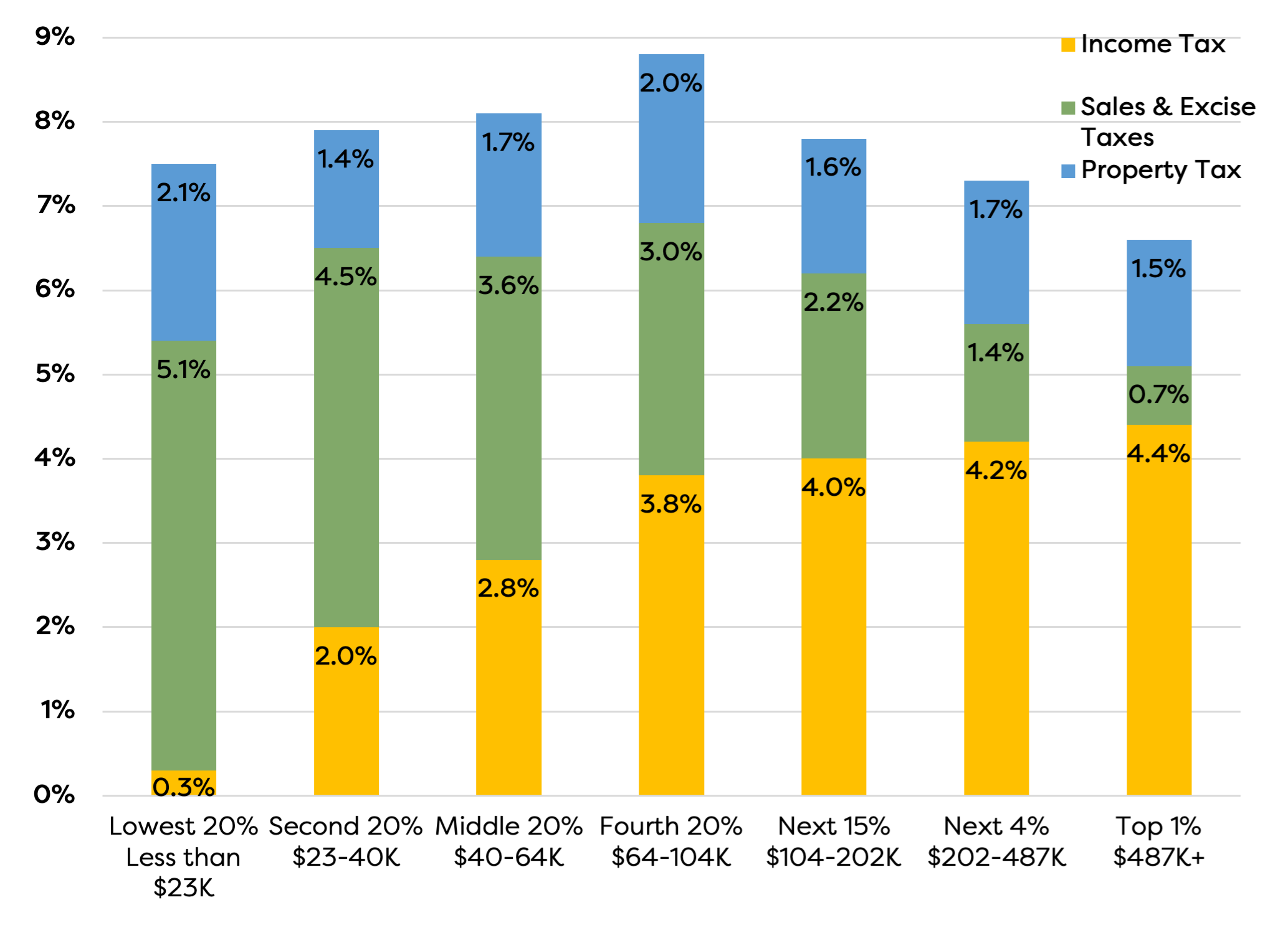Legislative Center
Tax and Budget
A Rough Legislative Session for Utah Kids (Again)
The 2024 Utah Legislative Session ended at midnight on Friday, March 1. For the Voices for Utah Children team, this session included supporting a lot of community engagement, working hard to protect the programs that protect Utah kids, and trying not to get distracted by outlandish efforts to "solve" problems that don't actually exist in Utah.
As usual, there were many, many missed opportunities for state leaders to improve the lives of Utah kids. Nonetheless, we managed to pull off some great victories - as always, in partnership with many supportive community members, our great partner organizations and supportive public servants.
We hosted six different public engagement events at the Capitol over seven weeks. Working closely with our community partners, we stopped some truly terrible legislation that literally threatened the lives of Utah kids who rely on Medicaid and CHIP. Thanks to many supportive child care professionals and working parents, we kept Utah's child care crisis in the media spotlight throughout the session.
For a deeper dive into our efforts in various policy areas, as well as a recap of what happened to the many different bills we were tracking, check out the virtual booklet below!
Voices Opposes Legislative Efforts to Suppress Public Ballot Initiatives
Our 2024 Legislative Agenda
Making Utah Taxes Fair for All Families
Most of us don't enjoy paying taxes. We do it, though, because pooling our money together through taxes makes it possible for us to have roads, schools, libraries and parks, fire fighters and law enforcement, and so many more public goods that none of us could afford on our own.
Tax policy (the ways we choose to collect taxes) impacts everyone, and often in many different ways. You may have very recently paid sales tax on your groceries, gas tax at the pump, property taxes on your home or through your rent, and of course, income tax on the money you earn.
From state to state, tax policy is unique; no two states collect taxes the same way. Tax policy also changes a lot over time. Different types of taxes affect people differently, depending on whether they have higher or lower incomes.
Some tax policies and structures promote fairness and equity. Other approaches to taxes contribute to social inequality. When tax policies burden lower-income people more than very wealthy people, who can more easily afford to pay higher taxes, we consider that unfair. Sometimes those kinds of tax policies are called "regressive."
States with the most unfair tax structures typically have:
- have no or little income tax,
- have no refundable tax credits, and
- rely on high sales and excise* taxes.
How Fair is Utah's Tax Structure?
Analysis by the Institute on Taxation and Economic Policy (ITEP) shows that in Utah, low- and middle-income families pay more of their income in taxes than the wealthiest households.
We judge Utah's tax fairness holistically, by looking at all the taxes that are paid by families at different income levels. This is the "effective tax rate," or the share of overall household income a family spends on income, sales/excise and property taxes in a year. The table below shows the effective tax rate of Utah households, depending on how much income they earn each year.
In Utah, 20% of families make less than $23,000 per year. These families pay approximately 7.5% of their total income in state and local taxes. By comparison, the top 1% of Utah families - which are earning more than $487,000 per year - pay an effective tax rate of only 6.6%.
But the Utah families who pay the most in taxes are those in the middle. Middle-income households (making between $40,000 and $104,000 per year) have an effective income tax rate from 8.1% to 8.8% - the highest effective tax rate of all income levels.
 Towards Fairness: Tax Credits that Actually Work for Working Families
Towards Fairness: Tax Credits that Actually Work for Working Families
One way to make our state tax structure more fair is through carefully constructed income tax credits. When tax credits cut out families that pay less in income tax - like our non-refundable Earned Income and Child Tax Credits - then the families who are struggling most, benefit the least. Some legislators argue that families who don't pay as much income tax don't "deserve" to fully benefit from tax credits. But those families clearly pay more in overall taxes than any other income group.
Babies don't pay any taxes - but the households they live in do. Working families with young children deserve a tax system that supports them as they care for and raise the future leaders of our state. Having a fair tax structure in Utah means making sure children, and the households they are living in, have enough money to afford the things they need.
Learn How Better Income Tax Credits Help Families
Glossary
Effective Tax Rate: the share of income a family spends on taxes. This is calculated by dividing the amount families pay in taxes by their annual household income.
* Excise Tax: a tax directly levied on certain goods by a state, such as fuel, liquor, or cell phone plans. They are paid by the merchant before the goods can be sold and passed to the consumer through higher prices before the sales tax is added.
Nonrefundable Tax Credit: reduces the taxes owed - allows a taxpayer to only receive a reduction of their tax liability until it reaches zero.
Refundable Tax Credit: allows a taxpayer to receive a refund if the credit they receive is greater than their tax liability.
Tax Credit: a dollar-for-dollar amount that a taxpayer claims on their tax return to reduce the income tax they owe. You can use this to reduce your tax bill and potentially increase your refund amount.
Tax Liability: the amount of taxes owed by a taxpayer to the government before taking into account allowable tax credits.
Tax Policy: policies that determine how we to collect taxes.
Take Action on EITC Awareness Day
January 26th is Earned Income Tax Credit (EITC) Awareness Day! The EITC is a vital tool in reducing child poverty, and improving the long-term outcomes for children across our state.
Some tax policies - like the EITC - promote fairness and equity. Others make social inequality worse - we call those policies “regressive;” Regressive policies disproportionately hurt lower-income individuals while disproportionately benefiting rich people. That simply isn’t fair.
Utah was ranked 29 out of 50 states (plus the District of Columbia) in a recently released report from the Institute of Taxation and Economic Policy (ITEP) —-ITEP uses a “tax inequality index” to measure the effects of each state’s tax system on income inequality. Data from ITEP shows that lower and middle-income households pay a larger portion of their income in taxes overall, when compared to wealthier households. Middle-class families pay the highest effective tax rate (income tax, sales tax, other taxes and fees), while the wealthiest 1% of Utah households pay the least of all (see table below).
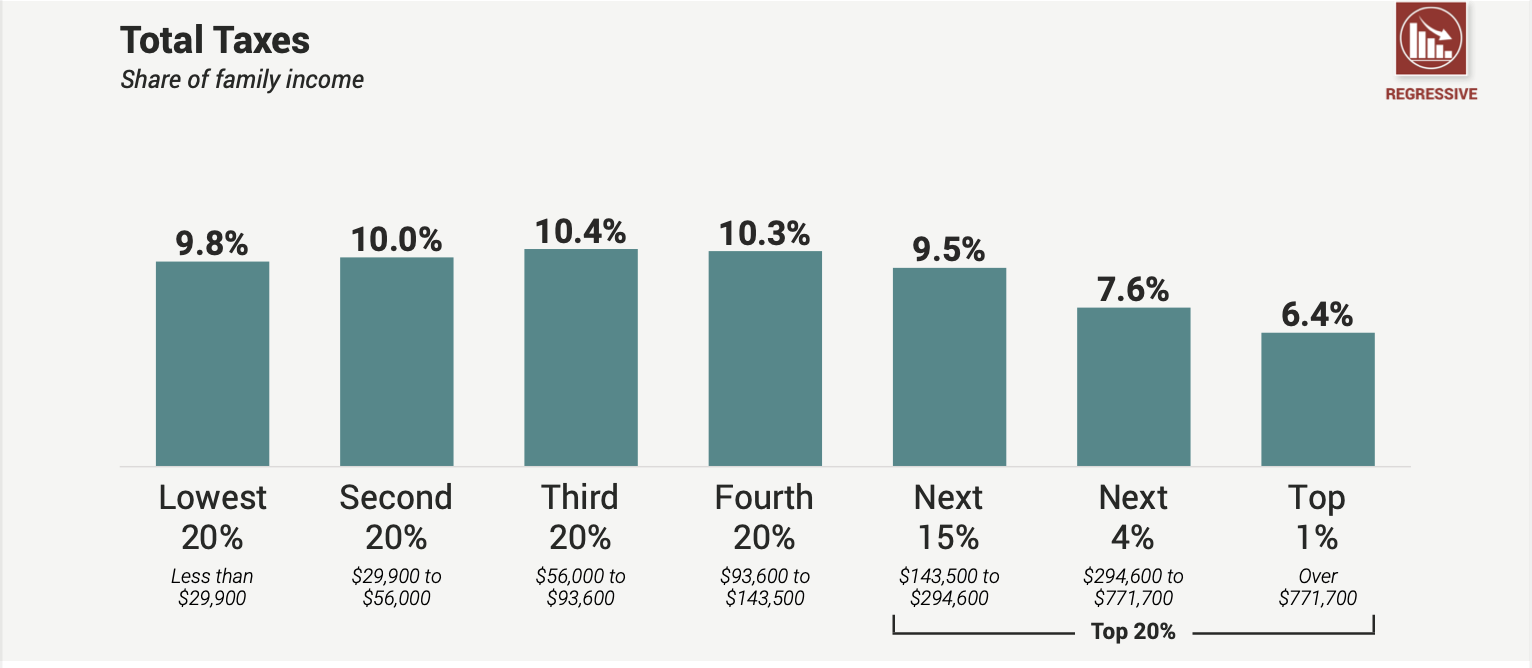
Thirty-one states and the District of Columbia have a state Earned Income Tax Credit (EITC). Utah is one of only five states that excludes the poorest working families from benefiting from their state EITC, by making their EITC non-refundable. By contrast, many states have taken steps to ensure that their state EITC includes as many low- and middle-income families as possible. In 2024, Utah legislators will have a chance to help more Utah families, too - by making our state EITC refundable.
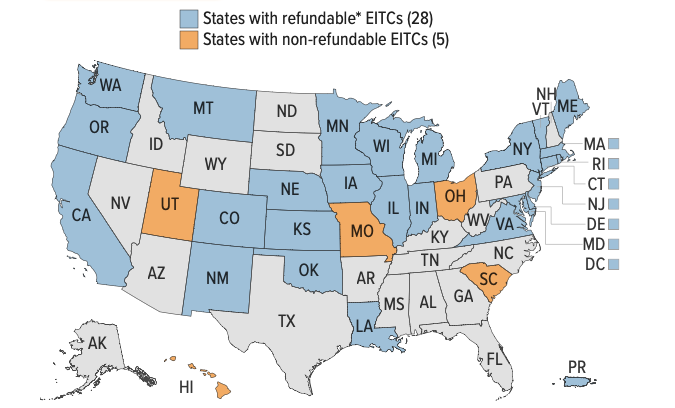
Support HB 149: Make Utah's EITC Refundable!
This year, Representative Marsha Judkins (R-Provo) is championing HB149, which would transform Utah’s EITC into a refundable credit. This bold change will help many more families to afford essential necessities for their children's well-being, such as food, clothing and medical care.
On this EITC Awareness Day, let's make some noise! Reach out to your state legislators, remind them why this policy is impactful for families and children, and help us advocate for a more fair and equitable tax system.
To learn more about the Earned Income Tax Credit, see here.
Empower Utah Families with Better Income Tax Credits
When it comes to improving the lives of hardworking Utahns, we need policies that help those who are struggling to make ends meet. A refundable Earned Income Tax Credit (EITC) could do just that.
Let's start by discussing what the earned income tax credit is and how it benefits working families and children.
What is an Earned Income Tax Credit?
You may already know about the federal Earned Income Tax Credit (EITC). It is a refundable federal income tax credit for low- and moderate-income working people, that was created to support people who are in the workforce but need extra support to meet their families' needs. To claim the federal EITC, you must have earned income and everyone on your tax return must have a social security number.
The amount of your credit will be determined by your family's earnings, as well as the number of children you have. The EITC credit may help to reduce the amount you owe on your federal taxes - and if the EITC amount is higher than the federal taxes you own, you can actually get money back from the government.
The EITC is a critical policy tool to support financial stability in working families. Even just a few hundred dollars a year can help families stay current on bills, purchase groceries, afford car repairs, or pay down debt.
How does Utah's Earned Income Tax Credit work?
Because the federal EITC has been so effective at supporting working families, many states have created their own Earned Income Tax Credits in order to help these families even more. Currently 31 states offer a state EITC. Utah enacted a limited EITC for families with children in 2022.
Calculating your state Earned Income Tax Credit amount in Utah is easy: it will be 20% of whatever your federal EITC amount is when you file both your federal and state taxes. However, due to the way it was structured by the state legislature, Utah's EITC currently excludes many hardworking families who should benefit. 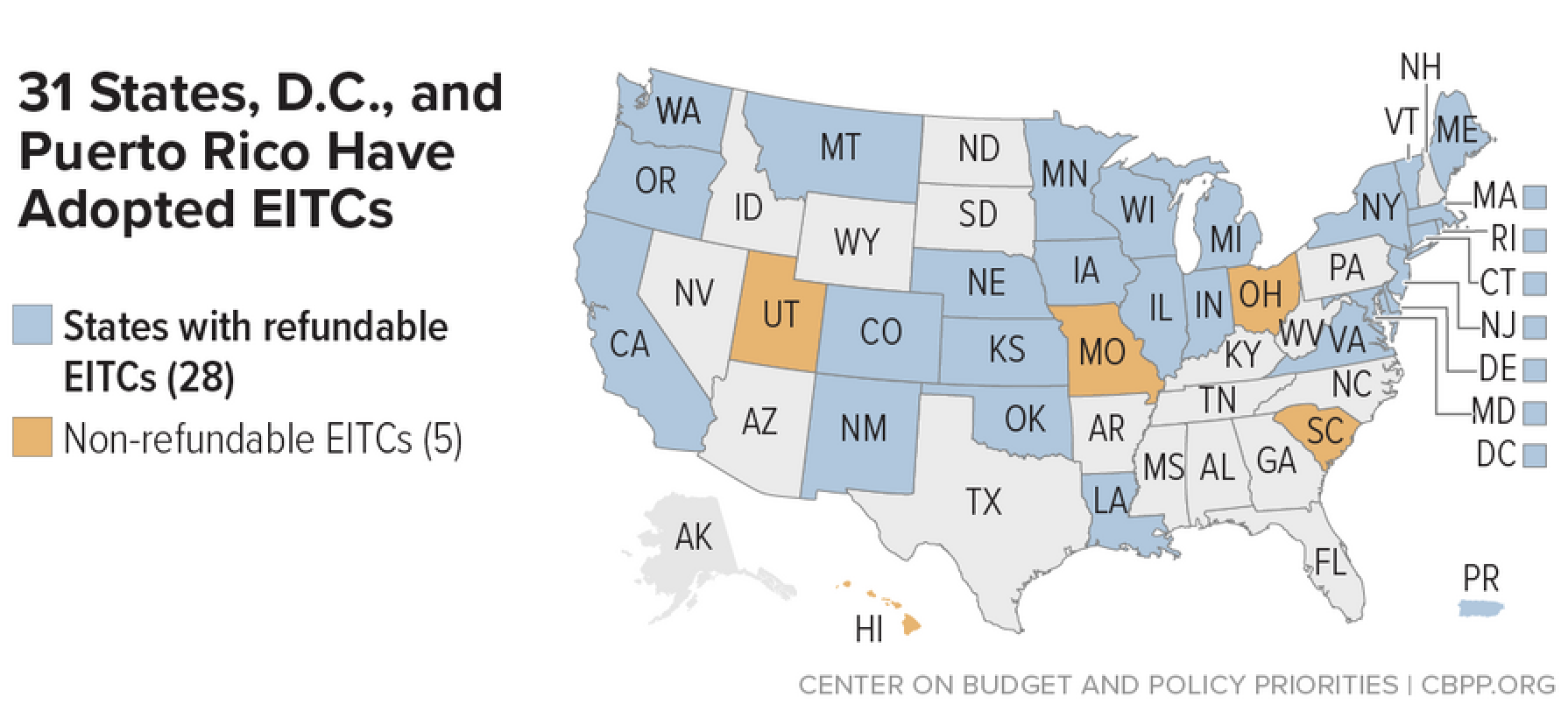
Our state EITC's biggest limitation is that it is "non-refundable." Utah is one of only five states with this exclusionary policy. Unlike the federal EITC, Utah's tax credit can only be applied to the income taxes you owe. You will never receive any money back from claiming the state EITC. Unless your state taxes add up to the amount of the state EITC you are allowed to claim, or more than that amount, your family misses out on the full benefit.
A refundable state EITC is a simple and cost-effective way to level the playing field for Utah families. These days, families who don't make a lot of money struggle to afford to live and raise a family in Utah. Especially for families with young children, who are just starting out in their careers, every little bit of extra financial support really helps.
State leaders say that our state EITC is meant to provide a maximum benefit for working families with children, with annual (adjusted) incomes between $11,000 and $26,000. Imagine a family with two young children, where one parent is still in college, and the other parent works only 32 hours a week. Because Utah's EITC is not refundable, none of the struggling families in this income range will see any benefit from the tax credit.
Though they don't make a lot of money, these people actually pay more taxes, as a percent of their income, than the wealthiest people in Utah. These hard-working families deserve a refundable state tax credit.
Our state EITC policy also requires that your earned income must be reported on a W-2 form, as proof of your work. This requirement means the state EITC can't be claimed by self-employed people, people who work on contract and people who participate in the "gig economy" (such as driving for Lyft or watching pets through Rover). Even though these workers may be eligible for the federal EITC, they can't benefit from the state credit because they don't receive a W-2 to recognize their hard work.
What is Refundability?
A refundable tax credit means that if the amount of the credit is more than the amount of taxes you own, you can get the extra amount back as a refund payment!
A non-refundable tax credit means that the amount of the credit can only ever offset the amount of taxes you owe. You can't benefit from any portion in excess of the income tax you owe, and you can't carry any unused portion of the credit over into another tax year.
Here's how this difference plays out in Utah for a married couple with two children, filing their taxes jointly. In this hypothetical family, one parent earns $39,000 working full-time (about $19/hr), and they only owe $200 in state income tax. If Utah’s EITC were refundable, they would realize the full benefit of the credit by receiving a refund of $300. Because our state EITC is non-refundable, that $300 just disappears. After it cancels out the $200 in taxes the family owes, Utah's EITC stops working.
In the coming year, legislators have the opportunity to empower working families in Utah with a much better Earned Income Tax Credit. By making our state Earned Income Tax Credit (EITC) refundable, state leaders could tangibly enhance the lives of these families, providing them with essential financial support needed for their daily well-being. If you're curious about the significance of equitable tax policies and the intricate web of tax distribution, learn more by following the link provided below.
Glossary
Tax Credit: a dollar-for-dollar amount that a taxpayer (s) claim on their tax return to reduce the income tax they owe. You can use this to reduce your tax bill and potentially increase your refund amount.
Tax Liability: the amount of taxes owed by a taxpayer to the government before taking into account allowable tax credits.
Nonrefundable Tax Credit: reduces the taxes you owe --- allows a taxpayer to only receive a reduction of their tax liability until it reaches zero.
Refundable Tax Credit: allows a taxpayer to receive a refund if the credit they receive is greater than their tax liability.
Sources
- https://www.cbpp.org/research/federal-tax/the-earned-income-tax-credit
- https://www.cbpp.org/blog/many-states-are-creating-or-expanding-tax-credits-to-help-families-afford-the-basics
- https://www.cbpp.org/research/state-budget-and-tax/states-can-enact-or-expand-child-tax-credits-and-earned-income-tax
- https://www.irs.gov/credits-deductions/individuals/earned-income-tax-credit-eitc
- https://www.irs.gov/newsroom/tax-credits-for-individuals-what-they-mean-and-how-they-can-help-refunds#
- https://itep.org/whopays/utah/
- https://taxfoundation.org/taxedu/glossary/tax-refund/
Tax Policy 101: What is Refundability?
Tax policy is complicated. Talking about taxes involves jargon, and concepts that can be confusing. For example, what is a 'refundable' tax credit? What exactly does that mean, and how does it help families? We answer these questions here with a quick breakdown of what refundability is and how it impacts families.
What is a "refundable" tax credit?
When a tax credit is refundable, it is available to all families. Even if a family doesn’t owe anything when they file their income taxes, a refundable tax credit makes it possible for them to get money back in the form of a tax refund. Families can then use that money to pay for necessities.
What is a "non-refundable" tax credit?
A non-refundable tax credit can only ever be used to pay for taxes. If a family doesn’t owe any taxes after deductions, they can’t access any of the tax credit. If the family only owes a little in income taxes, they can only use the non-refundable credit to pay down whatever they owe.
How does refundability impact a family like yours?
In the illustrated example below, the Thompsons have two young children and make a family household income of $39,520 for the year. Based on their income and after deductions, they owe $200 in taxes. Now imagine they qualify for a $500 tax credit. Refundability can greatly impact how much they owe in taxes and whether they'll keep more of their earnings through a refund.
If the $500 tax credit is non-refundable, it will be applied to offset what the Thompsons owe in taxes. Since they owe $200, the credit will help reduce the amount they owe to $0 – a positive outcome.
However, an even better outcome for young families arises when that $500 tax credit is refundable. If refundable, the $500 tax credit can go towards the amount they owe in taxes ($200) and the remaining amount of $300 would go back to the Thompsons as a refund. This $300 can help with expenses like car repairs, new winter coats for the kids, and baby formula. Though it may not seem like a lot, families facing financial challenges can make good use of this help.
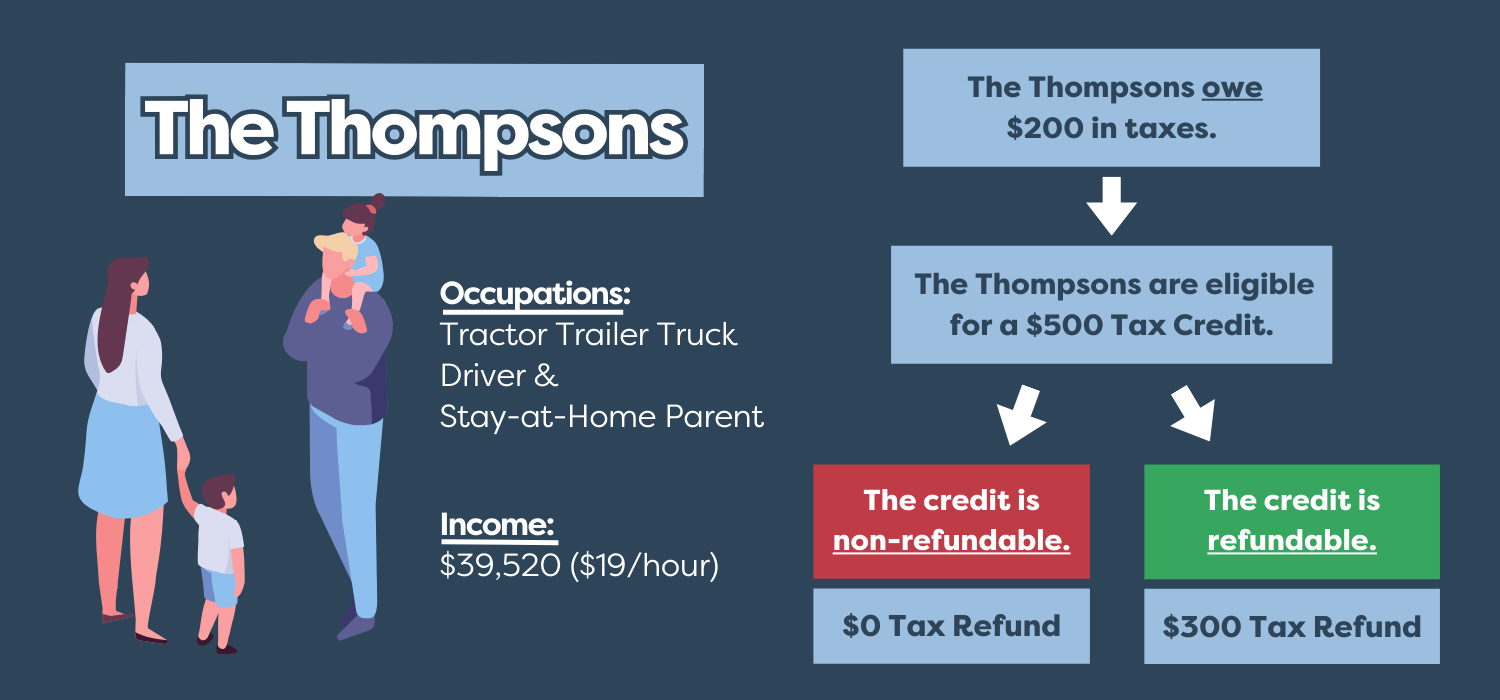
To learn more about making Utah’s EITC refundable, go here.
To learn more about making Utah’s CTC refundable, go here.
To read about other refundable tax credits in Utah, go here.
Glossary
Tax Credit: a dollar-for-dollar amount that a taxpayer (s) claim on their tax return to reduce the income tax they owe. You can use this to reduce your tax bill and potentially increase your refund amount.
Nonrefundable Tax Credit: reduces the taxes you owe --- allows a taxpayer to only receive a reduction of their tax liability until it reaches zero.
Refundable Tax Credit: allows a taxpayer to receive a refund if the credit they receive is greater than their tax liability.
Tax Policy: policies that determine how we collect taxes.
Tax Cuts Hurt Kids
Why Voices Opposes Proposed Income Tax Cuts
Over the past four years, Utah's Legislative Leadership has consistently prioritized tax cuts above the needs of Utah's families. Despite a $400 million tax cut passed last year that benefited the most wealthy Utahns, and now fearmongering about a supposed $130 million budget shortfall, Legislative Leadership is yet again pushing for another $170 million in tax cuts.
As the 2024 Legislative Session unfolds, many legislators will claim a need to curb spending and tighten purse strings - that we can’t afford to fully fund social services or any new programs. The question arises: How can we afford $160 million in tax cuts when many crucial needs remain unmet? In a time when working families are struggling to afford groceries, granting more tax cuts to the wealthy is a step in the wrong direction.
Who Benefits from the Proposed Tax Cuts?
The proposed tax cut will help the richest 1% more than anyone. Our analysis shows the proposal will save the bottom 80% of Utah earners between $24 and $107. While the top 1% of Utah earners will save a whopping $2,676. These tax cuts will not provide real help to working families.
Out of the proposed $170 million tax cut, $40 million will go to the top 1% of Utah's wealthiest individuals. In contrast, the bottom 80% will split about $61 million.
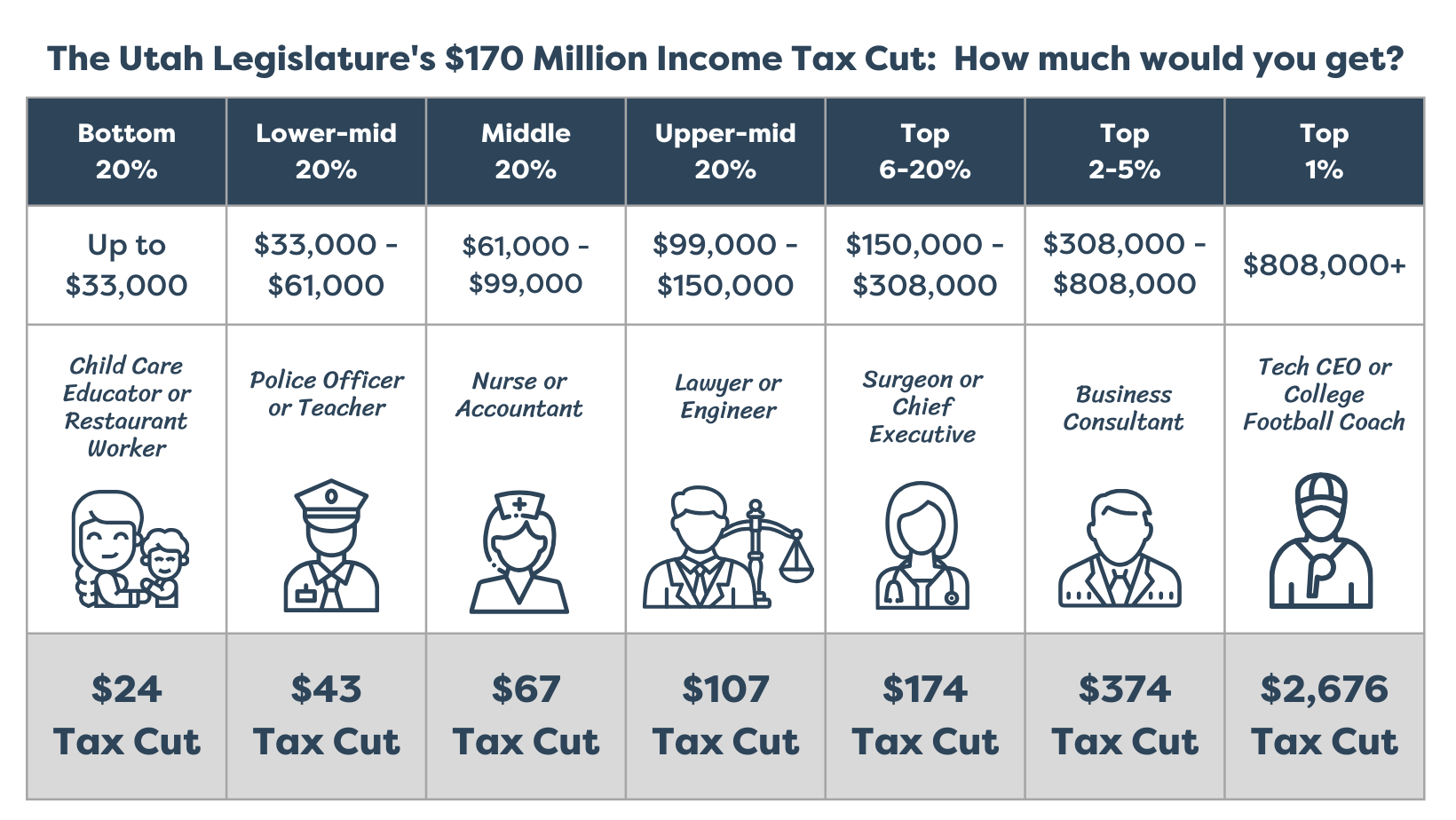
Note: This image was updated to reflect the changed fiscal note for SB69, increasing the estimate from $160 Million to $170 Million on 2/23/24.
Utah's Unfair Tax Code
Contrary to the argument that the top 1% pays more in taxes, the reality is that low- and middle-income families bear a higher tax burden. Families making less than $29,900 per year pay 9.8% of their total income in state and local taxes, while the top 1% pays an effective tax rate of only 6.4%.
Why Voices Opposes the Proposed Income Tax Cuts
Voices for Utah Children opposes the proposed tax cuts due to the unmet needs of children and families in Utah. Our income tax should be used to increase funding for education, child care, nutrition, mental health programs, and other services with long-term societal benefits.
The appeal of tax cuts fades when we realize it means losing essential services. Children need us to be their voice, and we need to show up and advocate for their future. It's not just the right thing to do for them; it's a move that benefits all of Utah. Here's why investing in children pays off:
- Investment in the future: Children are the future, and investing in their well-being leads to positive long-term outcomes. Early childhood interventions improve educational attainment, job prospects, and overall health, benefiting society as a whole. This includes supporting our child care system, which is facing a loss of nearly $600 million in federal support this year.
- Promoting equality: Programs for children often target low-income families and disadvantaged communities, narrowing the gap in opportunities and promoting a fairer society. Access to quality education, healthcare, and essential services can break the cycle of poverty, creating an even playing field for every child.
- Stimulating the economy: A healthy, educated population contributes to a stronger economy. Investments in children's programs create a ripple effect, boosting productivity, encouraging innovation, and fostering economic growth in the long run.
We need to hit pause on tax cuts and instead acknowledge that investing in children is the better path to follow. It will lead to a stronger and more prosperous Utah, and those benefits will far outweigh any tax cut currently being considered.


